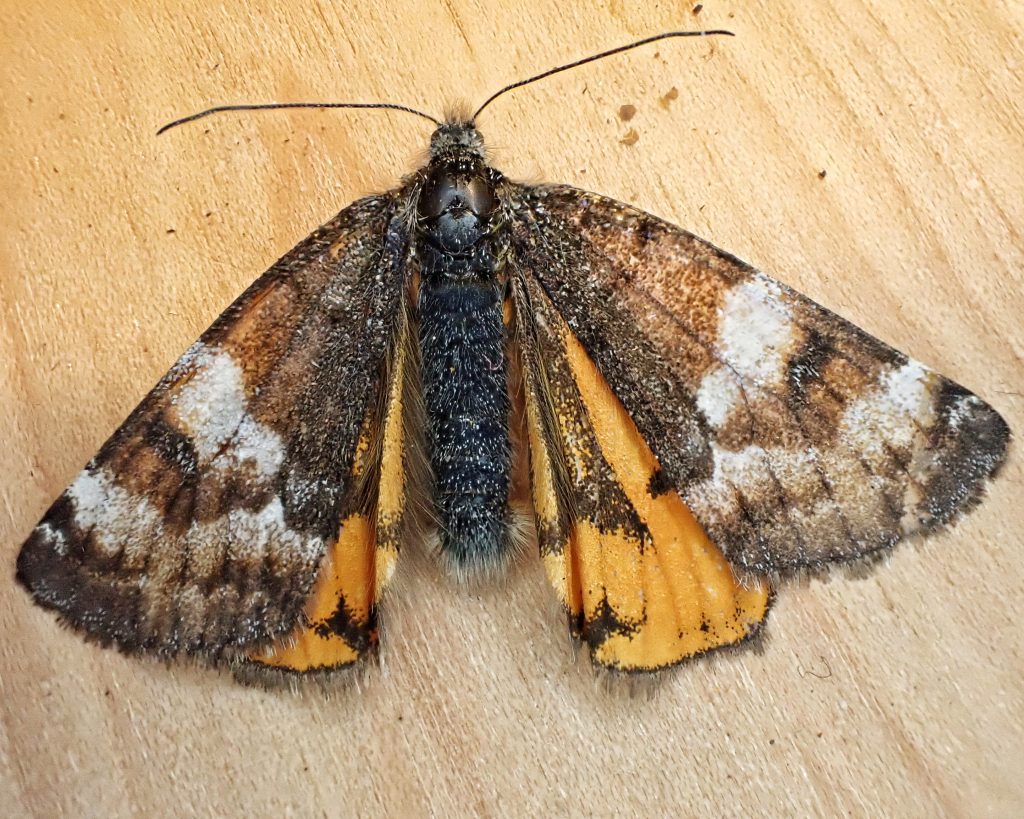
Howdy folks! I’m baaack! I’d guess that some of you may have wondered why I wasn’t posting for quite a while, and for an explanation, as well as what that means for this site, see my recent blog ‘Refocusing in Retirement’. I figured that eventually I’d find something that compelled me to start climbing up the mountain again, and finally finding the beautiful diurnal moth known as The Infant was the keister kick I needed.
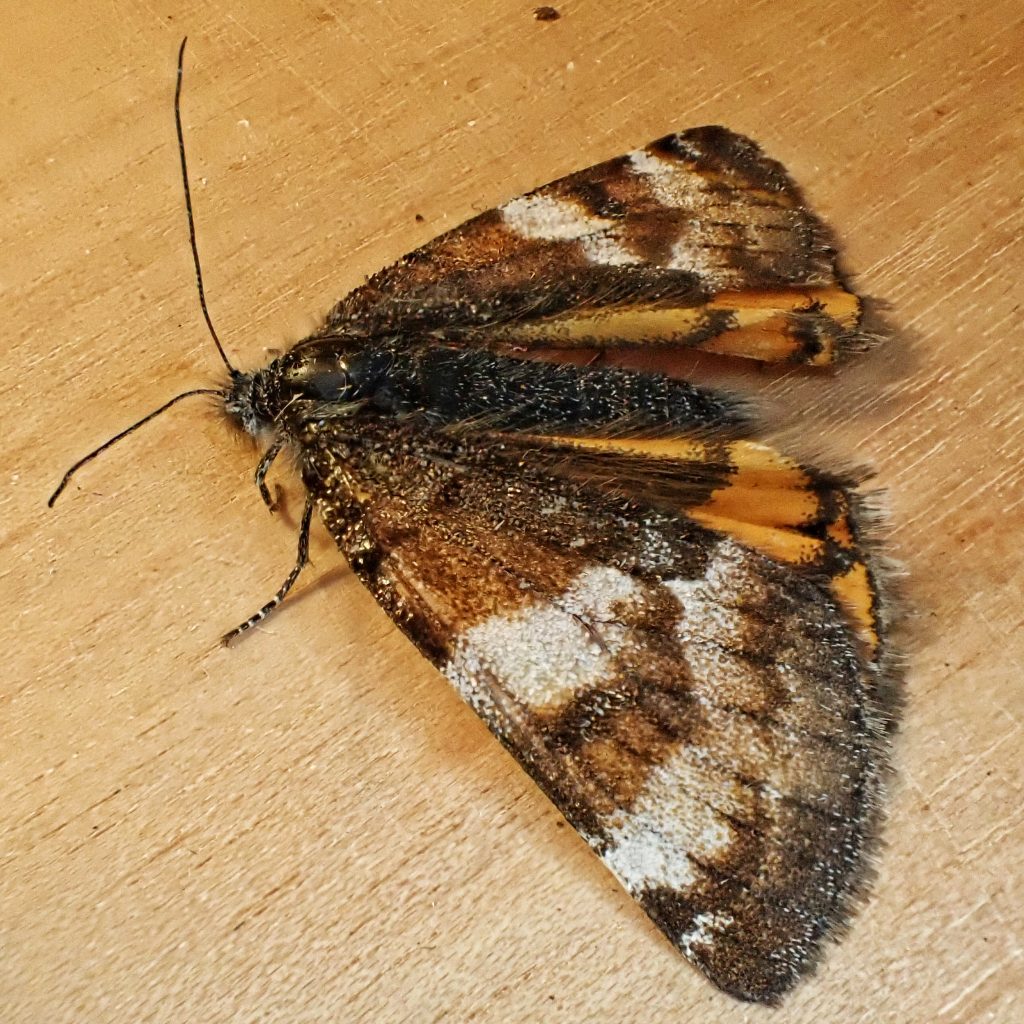
Archiearis infans is a day flying (diurnal), early spring, geometrid moth, and theoretically it should be found in the same habitat of mixed forests as the geometers Enchoria lacteata and Mesoleuca gratulata, both of which I see routinely in March and April. The larva are frequent guests of Red Alder, and I see that tree almost every time I go into the woods. But, despite the fact that seemingly everyone who posts about leps on Facebook sees them regularly, until last Saturday I had failed to find one.
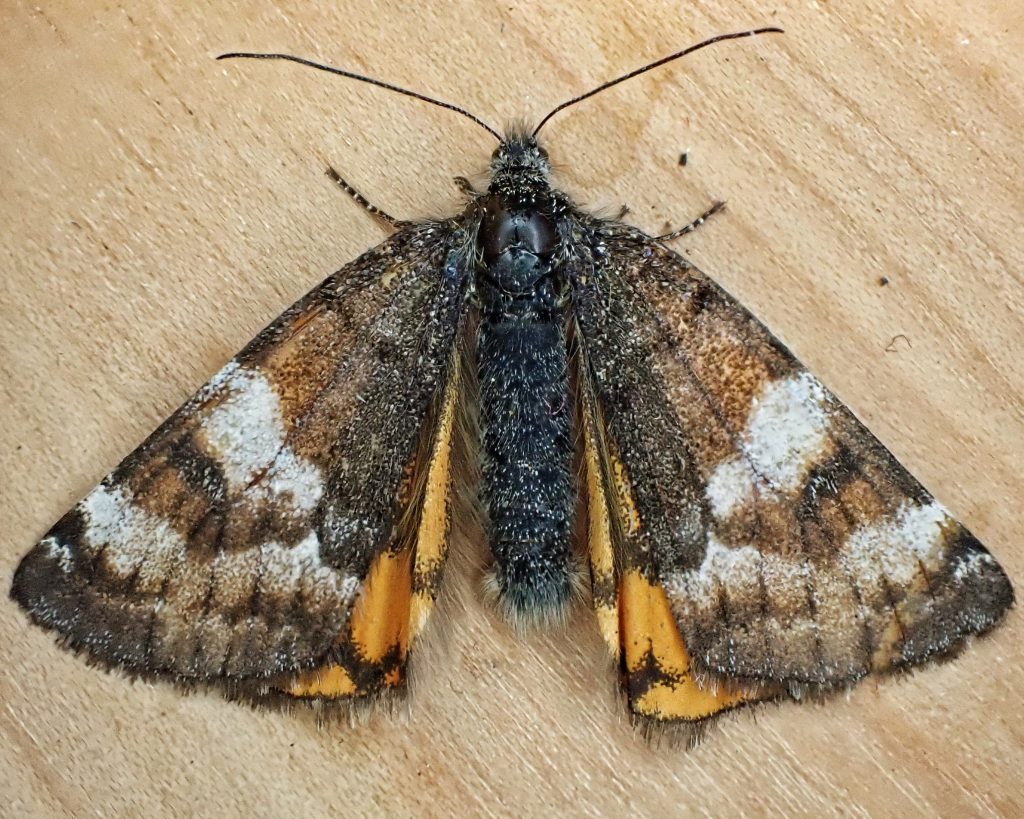
This was a fortuitous find, since we had been heading to a much higher elevation, only to find our way blocked by a down tree, on the other side of which was 10” of unbroken snow, so we turned around and drove up the Little White Salmon River instead. I’m out of practice at being a recreational naturalist, so I had neglected to ascertain that I had functional batteries for the cameras (I didn’t), and I’m rusty with the net. Thus, while I’m pretty sure I actually saw 3, I only managed to capture one for a good look. But one was enough for photos, a positive id, and a jump start to get back to writing the blog.
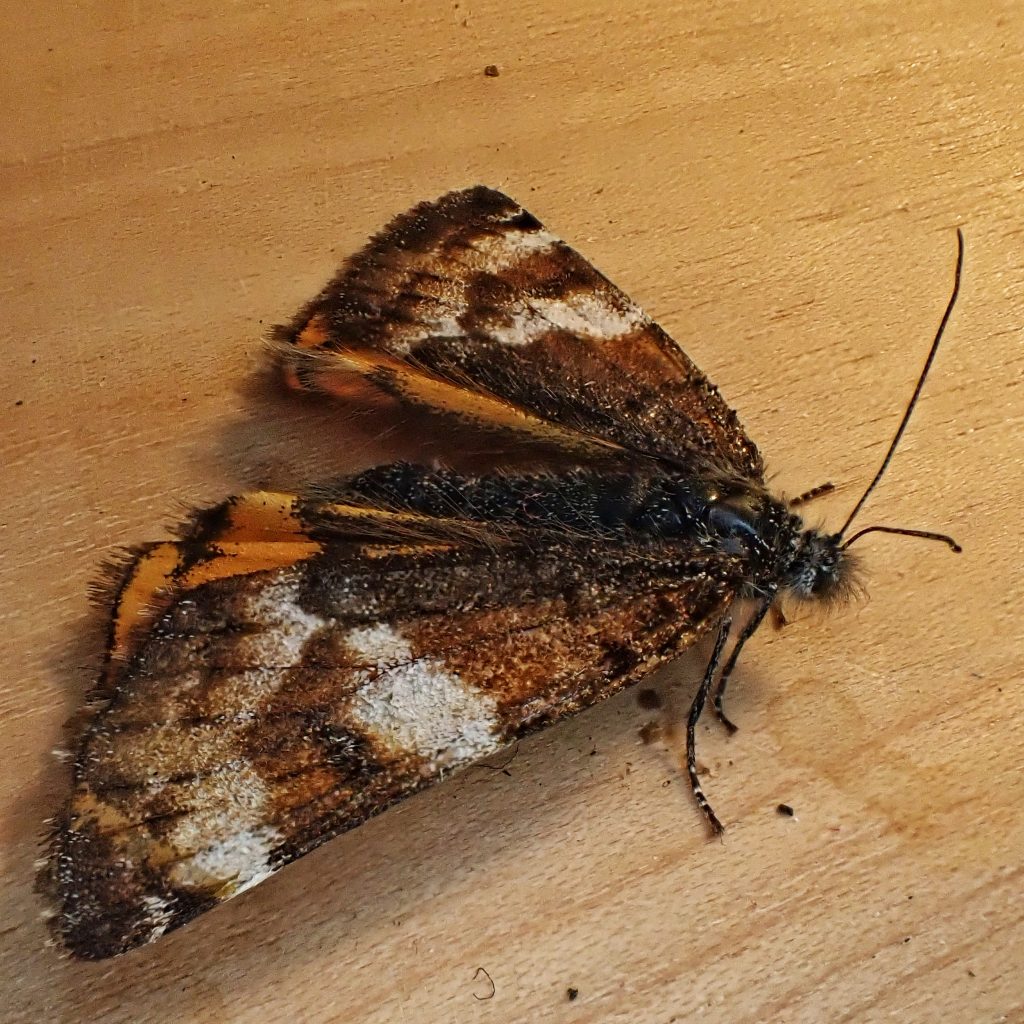
Description-Medium sized (fw length 14-16mm) moth with a reddish brown to brown forewing that has white antemedial and postmedial patches extending to the costa; hindwing is orange with incomplete black markings.
Similar species– Dasyfidonia sp have mostly complete transverse lines on the hindwing; Leptarctia californiae has mostly grey forewing, with very small, limited, and defined white; Annaphila sp. (and other diurnal spring moths with orange hindwings) are much smaller.
Habitat– Moist to mesic mixed forests and hardwood woodlands containing alder, birch, poplar, or willows.
Range-Northern North America; probably region wide in the PNW in appropriate habitat
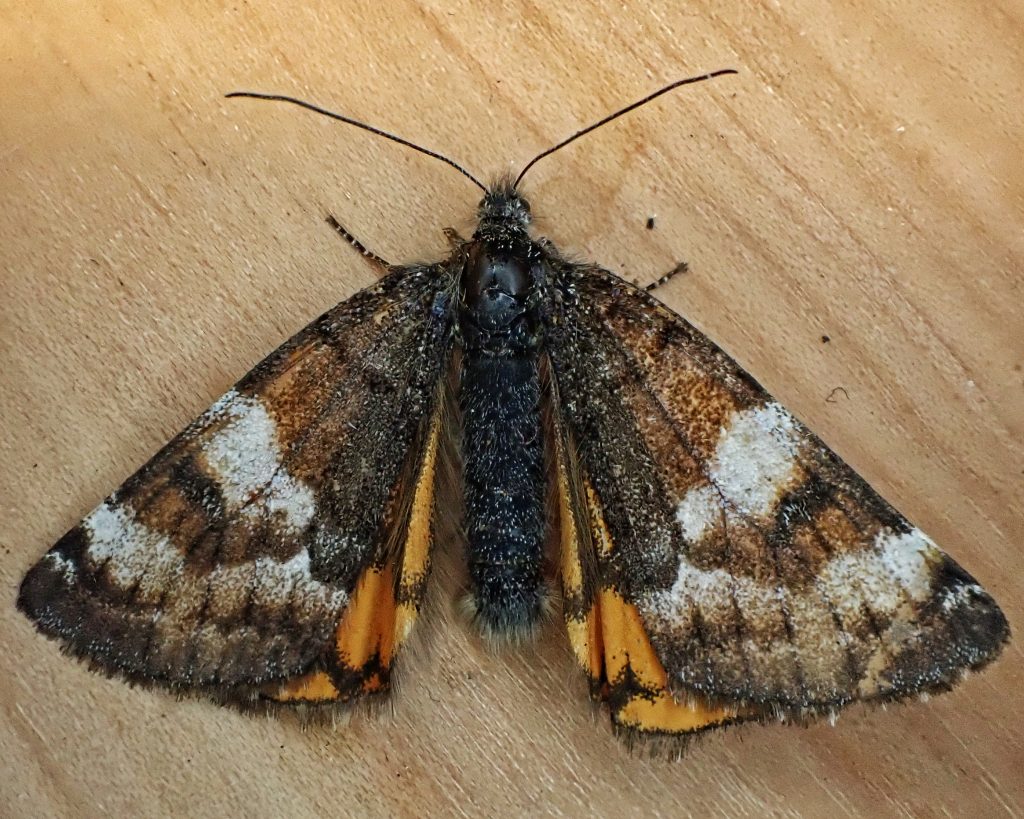
Eats-Larvae consume leaves of alder, birch, poplar and willow; will sometimes eat the flowers if the plant hasn’t leafed out yet; adults are known puddlers, and probably take nectar at flowers.
Eaten by-Larva and adults are probably eaten by most insectivorous insects, mammals, and birds; Song Sparrows are known to target the adults at puddles.
Adults active-Diurnal; March to mid July in our region, depending on elevation.
Life cycle-Eggs are laid in spring;larvae pupate in fall, overwinter as pupae in diapause, eclose in early spring .
Etymology of names–Archiearis is from the Greek words for ‘beginning early’, a reference to this being a genus of early spring flying Geometers. The specific epithet infans is from the Latin for ‘an infant’, and also references this moth’s early spring emergence.
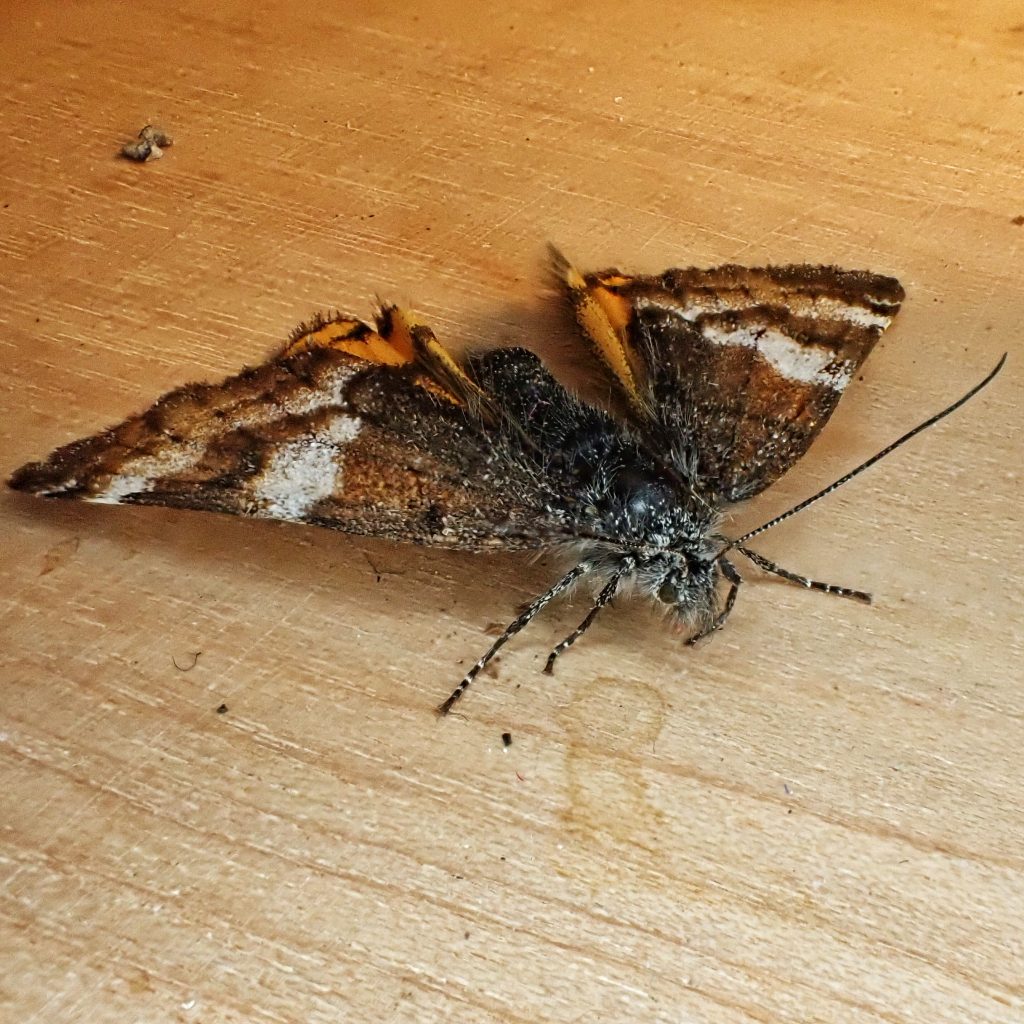
https://bugguide.net/node/view/38897
http://mothphotographersgroup.msstate.edu/species.php?hodges=6256
https://www.prairiehaven.com/?page_id=8048
https://www.butterfliesandmoths.org/species/Archiearis-infans
https://www.insectidentification.org/insect-description.php?identification=The-Infant-Moth
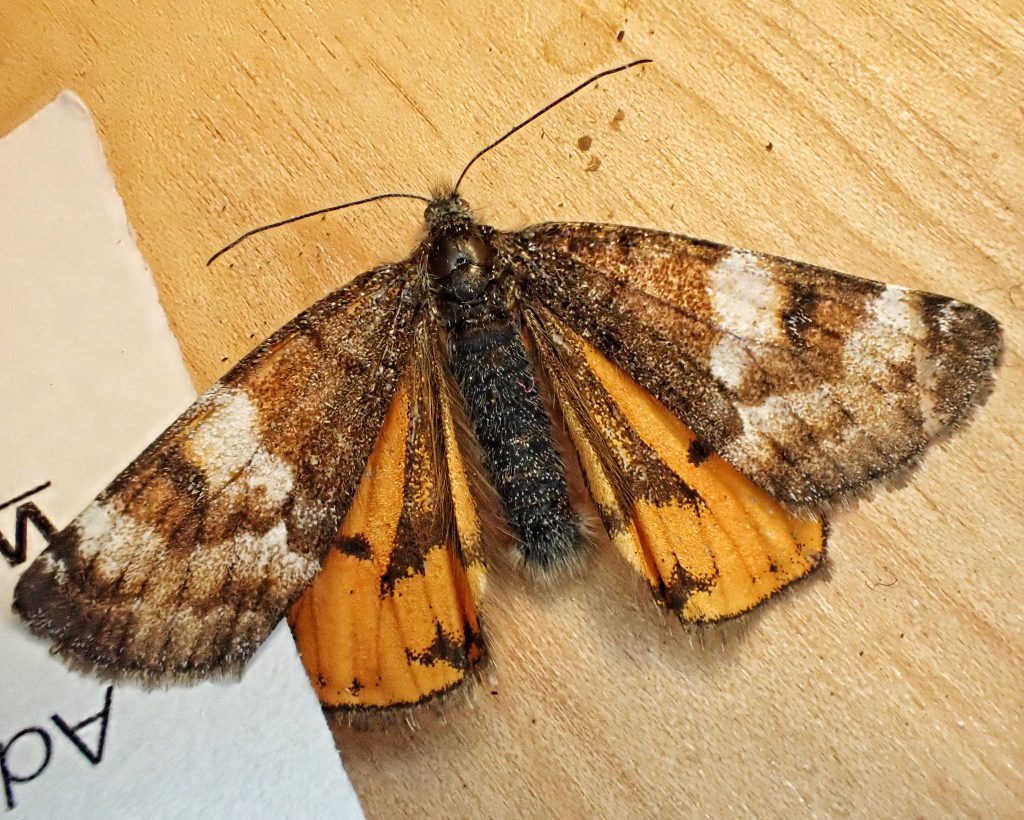
Thanks
Didnt even realize until I saw this email. Then all of a sudden! Oh yeah! What happened? Anyway glad to know you are back and hope you had a nice “sabattical.” Always happy to see the amazing species you bring up. Thank you for your work.
Hi Rebecca! Thanks. ‘What happened’ is kind of involved and I talk about it here;
http://10000thingsofthepnw.com/2022/04/28/refocusing-in-retirement/